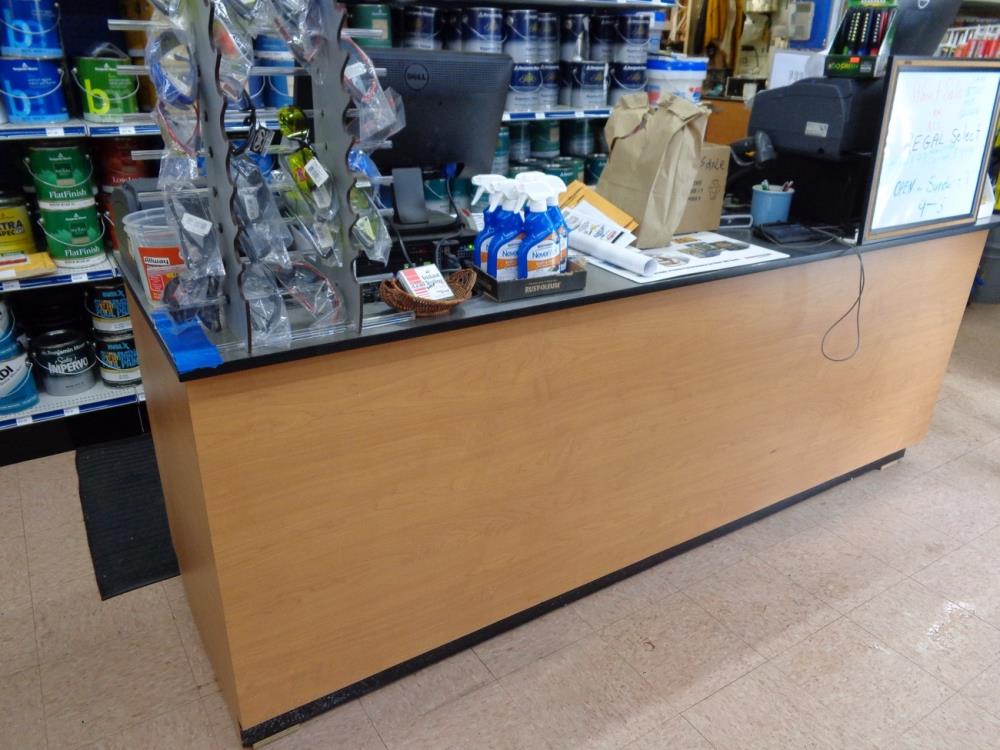What is retail checkout counters and common types?

The majority of customers and companies assume that the checkout counter is significant merely because it is the location where transactions are concluded, and they are correct. There are a variety of reasons why retailers should take the time to thoughtfully design their checkout stations, as shown below.
While some consumers need help throughout their shopping experience, the retail checkout counters will be the first point of contact for many shoppers with store staff and customer care agents. As a result, the way a company’s counter is structured, ornamented, and created will have a big influence on how customers view the company.
Small and medium-sized businesses can consider the checkout counter as a means of expressing their creativity and personality, not just through design but also via technology. The systems that a shop employs reveal a great deal about the company’s internal procedures and commitment to providing excellent customer service.
What is a Checkout Counter and how does it work?
When visiting a retail establishment, the checkout counter is the point of sale (POS) location where personnel execute consumer transactions. Items are rung up in order to update stock levels and compute the order total, which allows firms to collect payment.
The following are the most prevalent kinds of checkout counters:
Cash Wrap Counters
Money exchange and wrapping counters received their names from the place where things are exchanged for cash and wrapped up so that clients may securely carry them back to their respective homes. There have been significant advancements in the retail business since that time; in fact, the cash wrap counter is almost unrecognizable now.
In its current form, the cash wrap counter is comprised of product displays, heavy hardware, kiosks, and advertising. They are totally customisable, enabling businesses to design unique layouts to make the most of their given space.
Cash Register Counters
Contrary to the traditional usage of cash register counters for merely storing cash, newer digital ones are capable of processing a variety of payment methods, including checks and credit card transactions.
Retail checkout counters have a variety of hardware components, such as cash drawers, displays, and scanners, among others. These counters may take on a variety of forms depending on whether the company selects mobile or fixed equipment.
Checkout Counter Considerations
Before putting in new checkout counters, businesses should think about both the aesthetics and the functioning of the counters. The most important characteristics of a checkout counter are as follows:
Size, Space, and Style
The normal checkout counter is 48 to 72 inches broad, depending on the amount of available space and the services that are being offered. While virtually every shop need space for the POS system, bagging area, and other supplies, some businesses additionally dedicate locations for products, ads, and kiosks in addition to these necessities.
The counter should also be in keeping with the company’s brand and concept. In the case of a business that offers handcrafted items, the rustic design can include a wooden counter and subdued colors. Alternatively, firms that sell electronics tend to have a more contemporary appearance, with white or clear glass countertops as a standard.
Location
The position of the counter is an important consideration that changes depending on the available space and the architecture of the business. The location of the checkout counter, on the other hand, has a direct influence on the shopping experience of the client. Observations have shown that whenever a customer enters a business, they naturally go to the right and shop counterclockwise until they reach the checkout desk.
According to this hypothesis, experts recommend that businesses locate their checkout areas along the left wall of the shop, around 12-20 feet inside the store.. Retail establishments with a square footprint may also place the counter in the centre of the front area, if that is their desire.
Regardless of where it is located, the checkout counter should be easy to find and access in order to facilitate smooth transactions.
